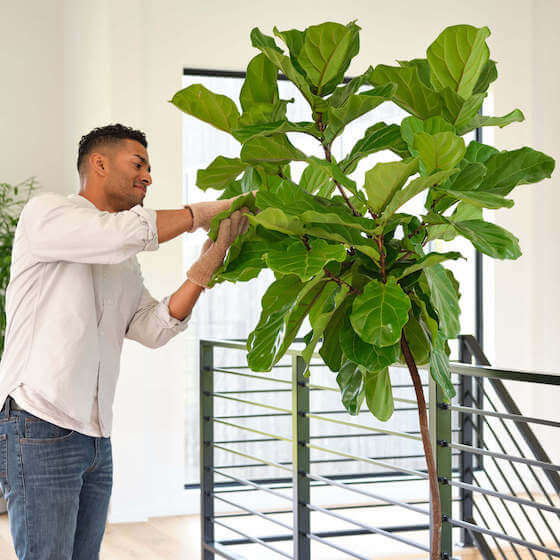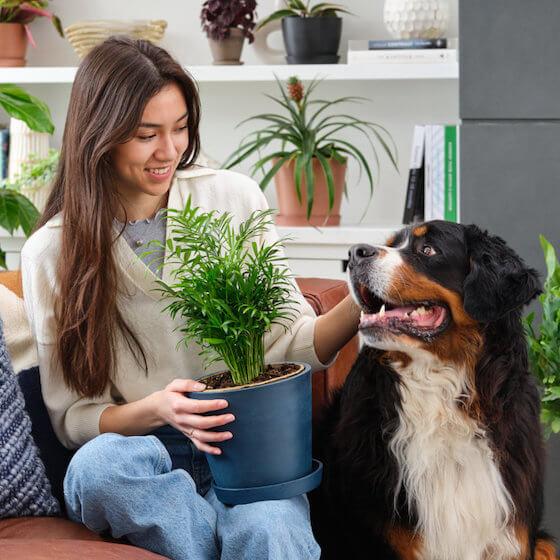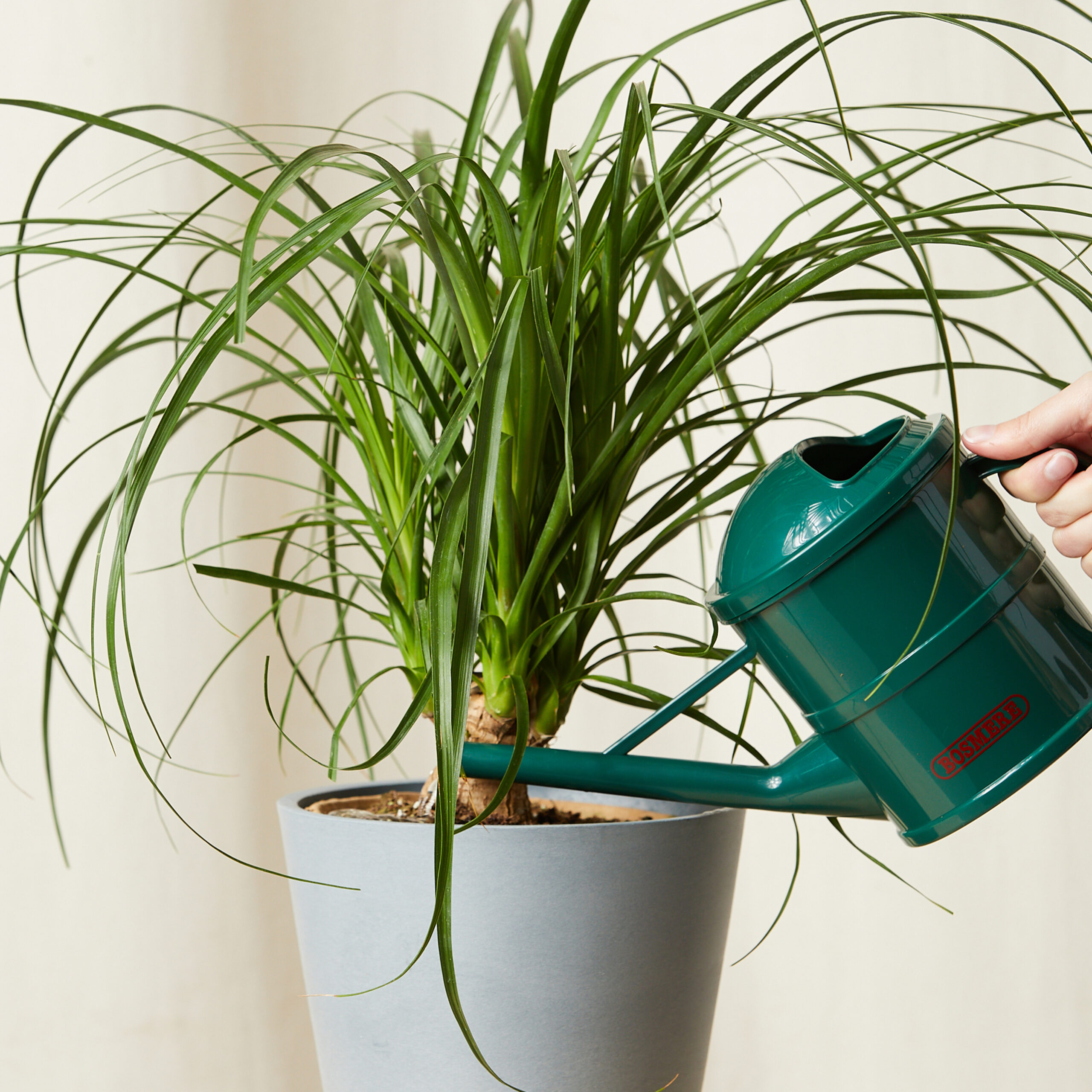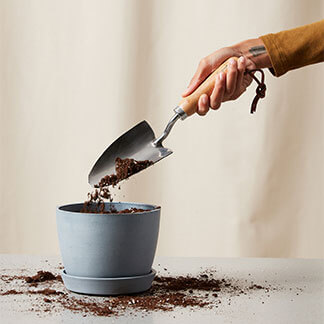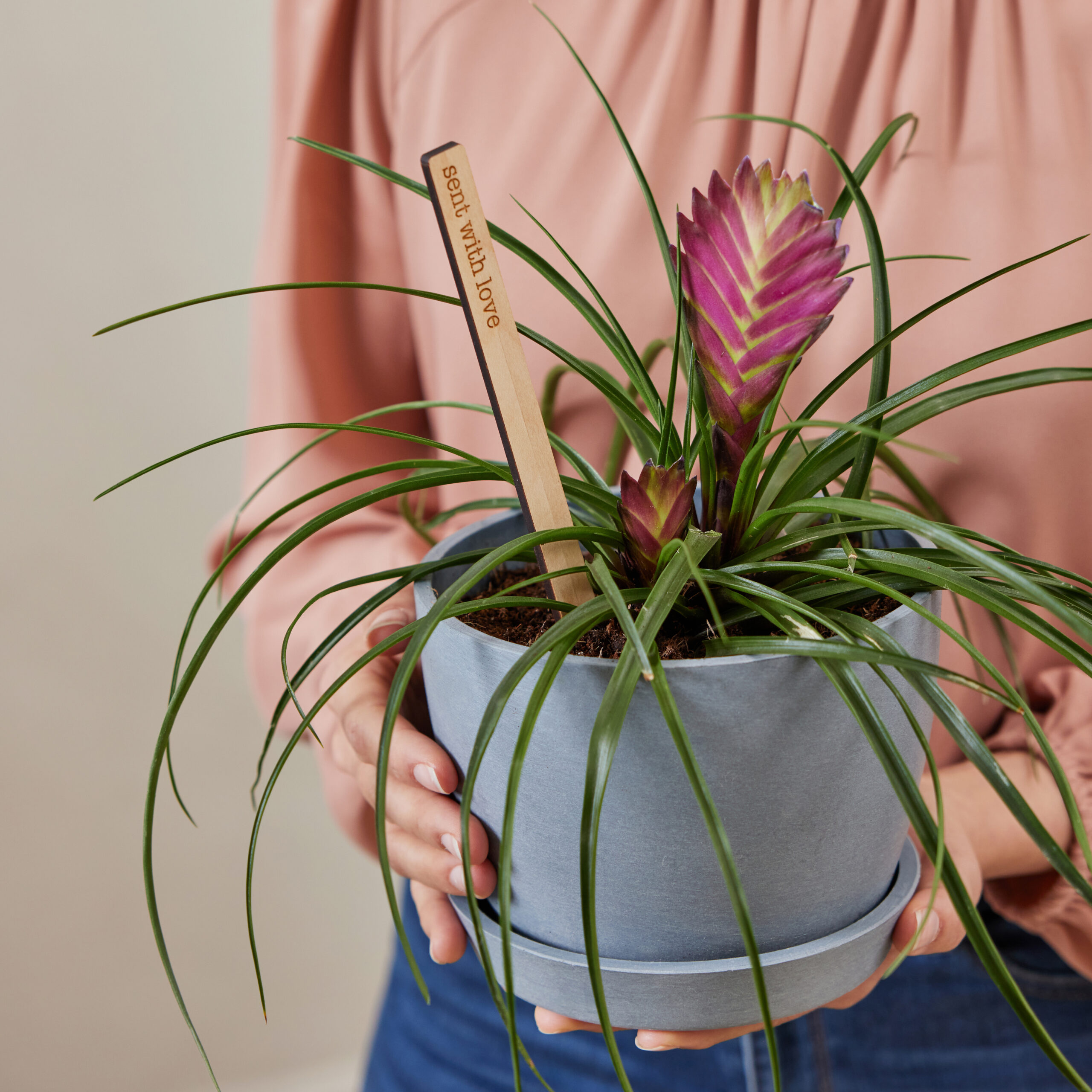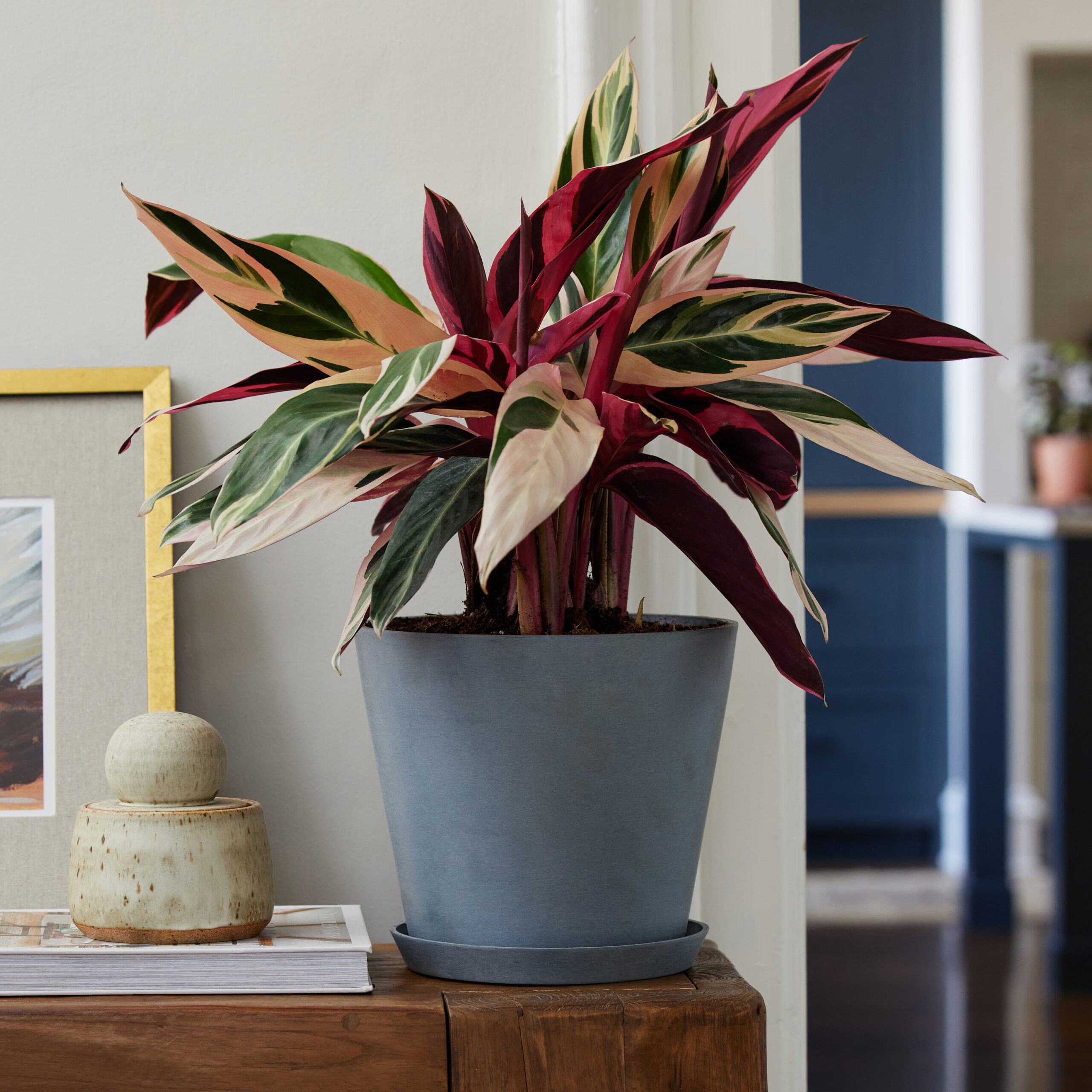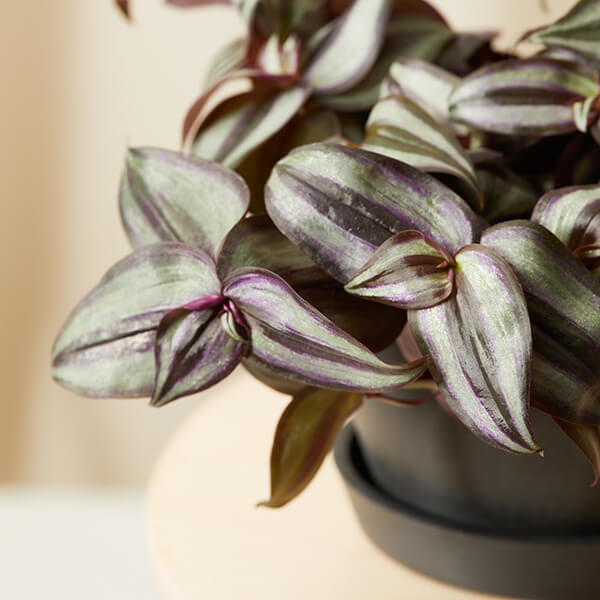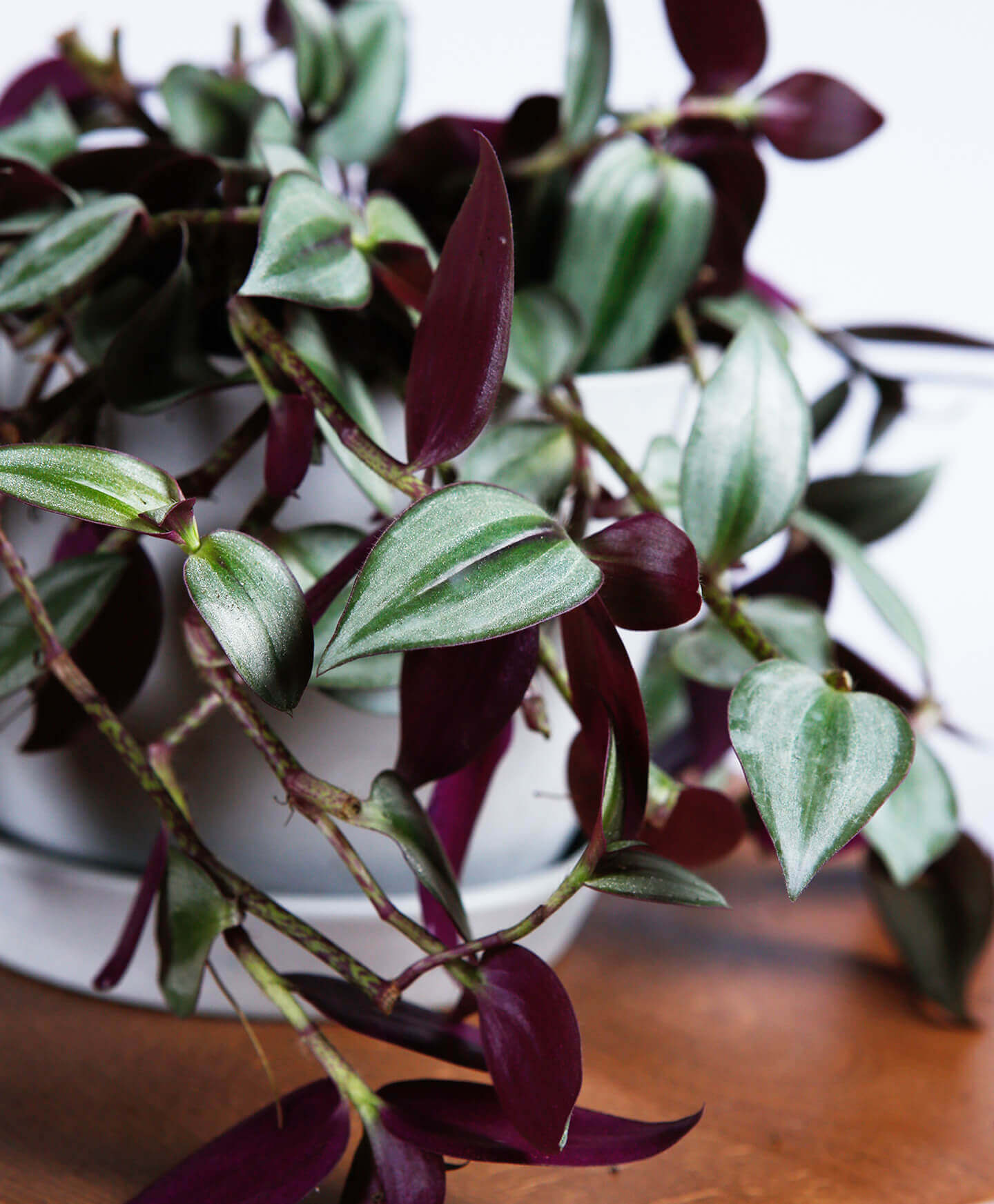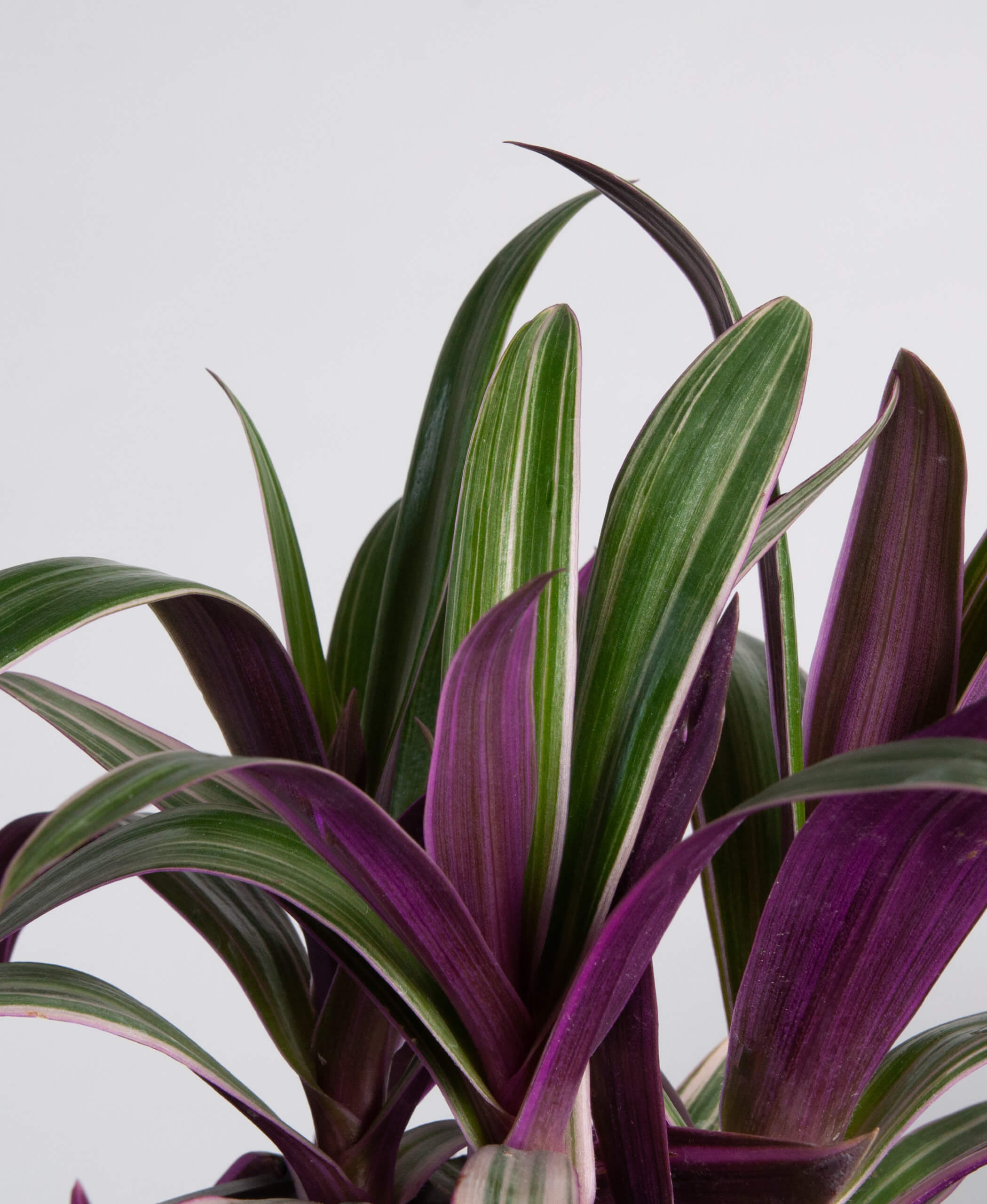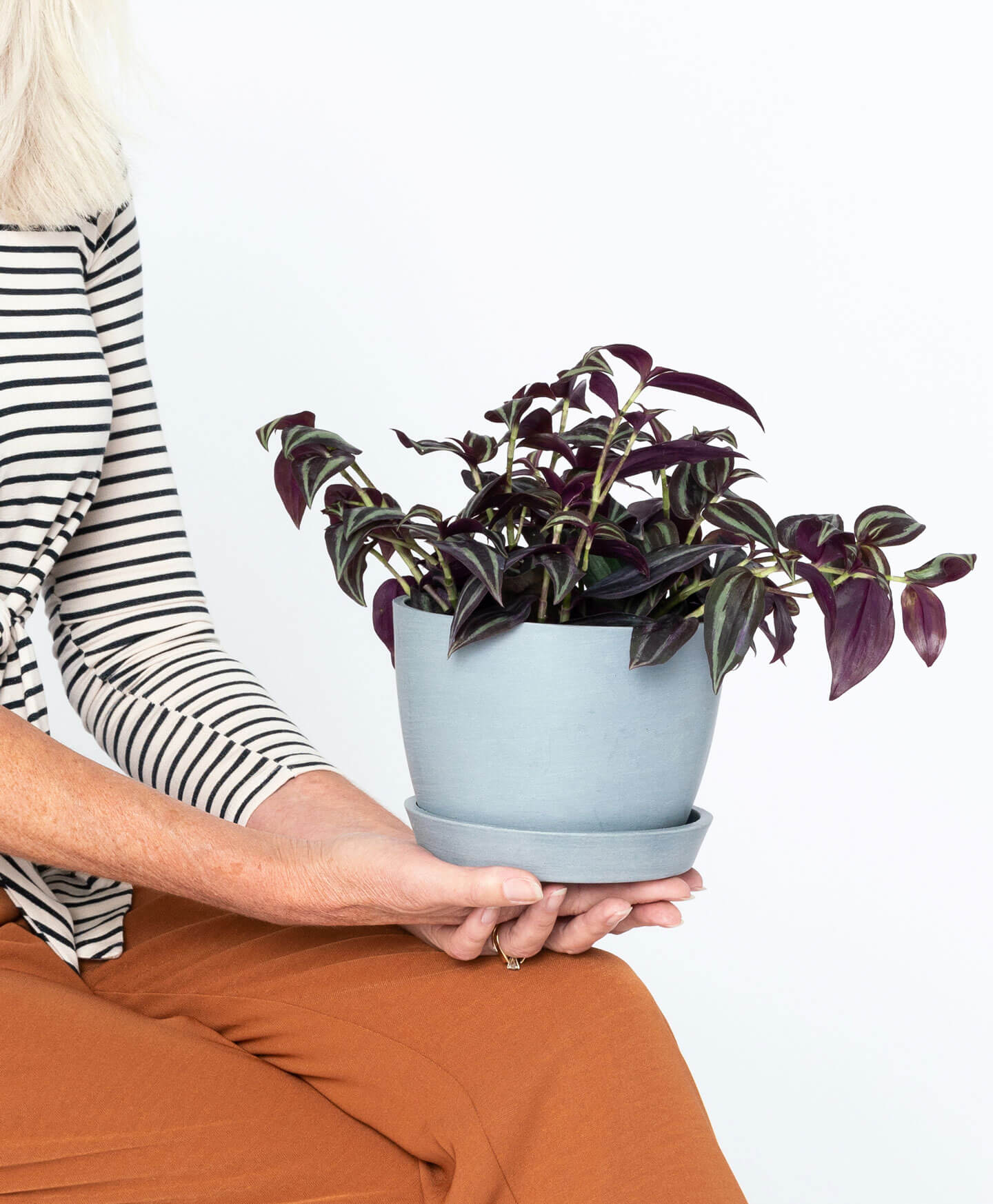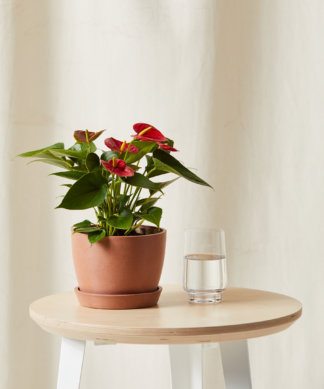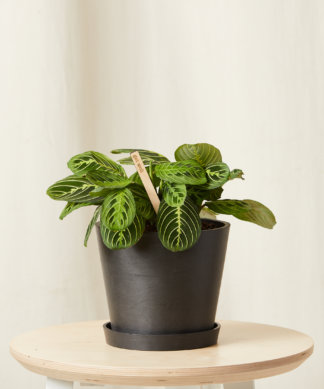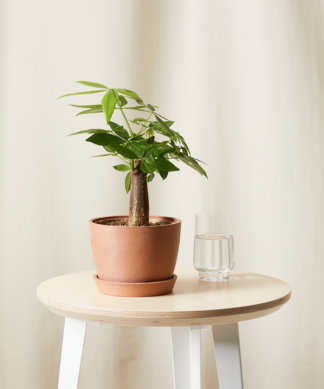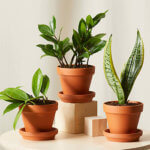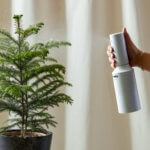How to care for your Tradescantia
Use these instructions to care for a Tradescantia. This guide will tell you how to water a Tradescantia; its light, temperature, humidity preferences and any additional care it might need to help it grow.
Purple Heart Tradescantia
Your Tradescantia prefers bright indirect light to direct light. Insufficient light will cause the foliage to fade.
Water your Tradescantia when the top 50%-75% of soil is dry. Water until liquid flows through the drainage hole at the bottom of the pot and discard any water that has accumulated in the saucer.
Your bathroom or kitchen would be a great choice for your Tradescantia because it does best in a slightly more humid environment. Feel free to mist your plant frequently. If the humidity is too low the leaves will start to brown.
Your Tradescantia will do great in average room temperatures between 60-80°F.
Feed monthly in the spring through fall with a general-purpose indoor plant fertilizer diluted to half strength. Before applying fertilizer in any form, make sure the soil is damp.
Your Tradescantia is mildly toxic to humans and pets. Ingestion may cause mouth and stomach irritation.
Pinching back the long vines encourages branching and increases the fullness of the plant. To do this, simply ‘pinch’ off at a joint or at the tender new growth at the end of the stem.
Rhoeo Oyster
Such a striking beauty like the Oyster Plant requires indirect sunlight. Hence, proper Oyster Plant care entails placing your plant near a window where filtered light shines through. The Oyster Plant might tolerate slightly higher light intensities, but this can cause the leaves to scorch.
Oyster Plants thrive in moist but not soggy soil similar to that in their natural habitat. Moreover, you’ll need to use tepid distilled or rain water. Tap water contains minerals that damage your plant, and Oyster Plants appreciate water that’s room temperature instead of cold. Also, take special care not to water your plant overhead as this can damage the blossoms.
Your Oyster Plant can tolerate average humidity conditions, but it would flourish more in a highly humid environment. Therefore, you might mist the leaves regularly, but be careful about leaving too much moisture behind since it can promote fungal growth. (And don’t forget to use distilled or rain water in your mister.) Another option is placing a humidifier in the same room.
Average room temperatures are perfect for your Oyster plant, but it doesn’t care for fluctuations or extremes. So remember to keep your plant away from drafts and vents.
During the growing season from spring to summer, fertilize your Oyster Plant once a month with a general houseplant fertilizer diluted to half strength. (Don’t forget to use filtered or rain water.) During the winter, you can cut back on the feedings to every other month or stop fertilizing until the growing season.
The Oyster Plant is toxic if ingested by humans or pets. Handling can cause skin irritation, so wear gloves when pruning or repotting.
As your Oyster Plant matures, it will produce pups. These can be taken out of the pot once their roots are established and planted in their own pot.
Tradescantia Nanouk
Give your Tradescantia Nanouk indirect bright light to keep the bold colors. It can be in lower light but colors will fade.
Water when the soil volume is 50% dry. Water thoroughly until you see it flow out of the drainage hole. Discard any excess water in the dish to discourage root rot.
The Tradescantia Nanouk does well in average household humidity, but will like the occasional misting.
Your Tradescantia Nanouk prefers temperatures between 60-80°F.
Feed monthly in the spring through fall with a general-purpose indoor plant fertilizer diluted to half strength. Before applying fertilizer in any form, make sure the soil is damp.
The Tradescantia Nanouk is toxic to humans and pets in ingested.
Pinching back the long vines encourages branching and increases the fullness of the plant. To do this, simply ‘pinch’ off at a joint or at the tender new growth at the end of the stem.
Tradescantia Zebrina
Bright, indirect sunlight makes your Tradescantia happy. Hence placing your plant near an east or west-facing window would work well. Direct or intense light, on the other hand, scorches the leaves while too little sun results in legginess. If you can’t find the ideal spot, you might need to place a grow light nearby as long as it doesn’t shine directly on the plant.
While regular watering is an important part of your Tradescantia care, you should refrain from watering until half of the soil is dry. At that point, you’ll water thoroughly with a watering can while making sure the soil does not get waterlogged. Also, try not to wait too long in between waterings because the leaves will wilt and fall.
Tradescantia does well in normal household humidity of 30%, but misting also proves to be helpful. You can also use a humidifier or place the plant’s container on top of a pebble tray filled with water.
Tradescantia plants love to stay warm in temperatures of 60℉-70℉. They don’t tolerate drafts or fluctuating temperatures from air conditioner vents or heaters.
Monthly feedings are a part of a Tradescantia care, specifically during the spring and early fall. You will need to dilute an all-purpose, indoor plant fertilizer at half strength and apply it to damp soil.
Tradescantia is toxic for pets and humans. So ingesting should be avoided.
Pinching back the long vines encourages branching and increases the fullness of the plant. To do this, simply ‘pinch’ off at a joint or at the tender new growth at the end of the stem.
Tahitian Bridal Veil
Give your Tahitian Bridal Veil indirect bright light. This can be found in an eastern window or a few feet back from a southern or western window. It can tolerate lower light but it most likely will not flower during the warmer months and growth will slow.
Water when the soil volume is 50% dry. Water thoroughly until you see it flow out of the drainage hole. Discard any excess water in the dish to discourage root rot.
The Tahitian Bridal Veil does well in average household humidity, but will like the occasional misting.
Your Tahitian Bridal Veil prefers temperatures between 55-80°F.
Feed monthly in the spring through fall with a general-purpose indoor plant fertilizer diluted to half strength. Before applying fertilizer in any form, make sure the soil is damp.
The Tahitian Bridal Veil is toxic to humans and pets if ingested.
Pinching back the long vines encourages branching and increases the fullness of the plant. To do this, simply ‘pinch’ off a stem at a leaf joint, removing the tender new growth at the end of the stem. New growth will soon appear.
